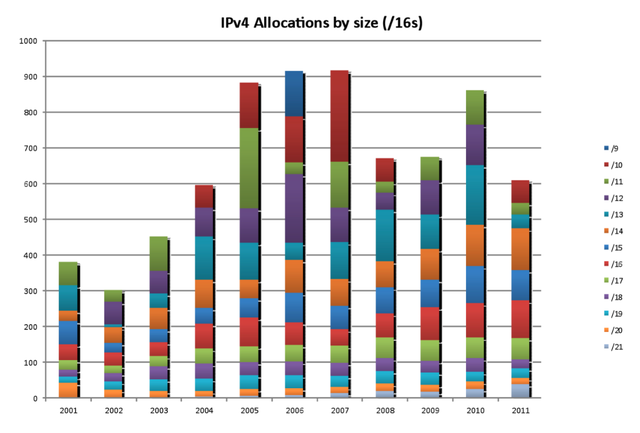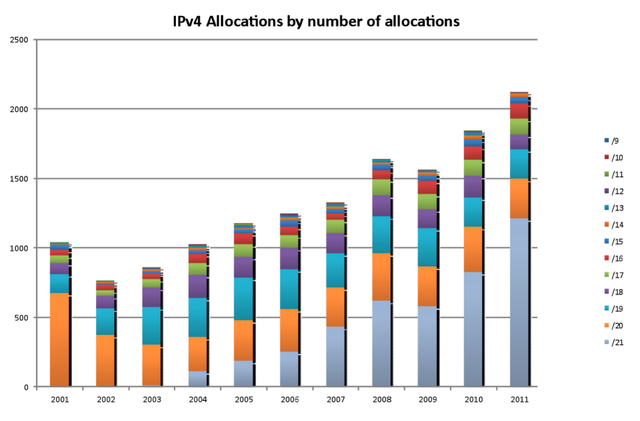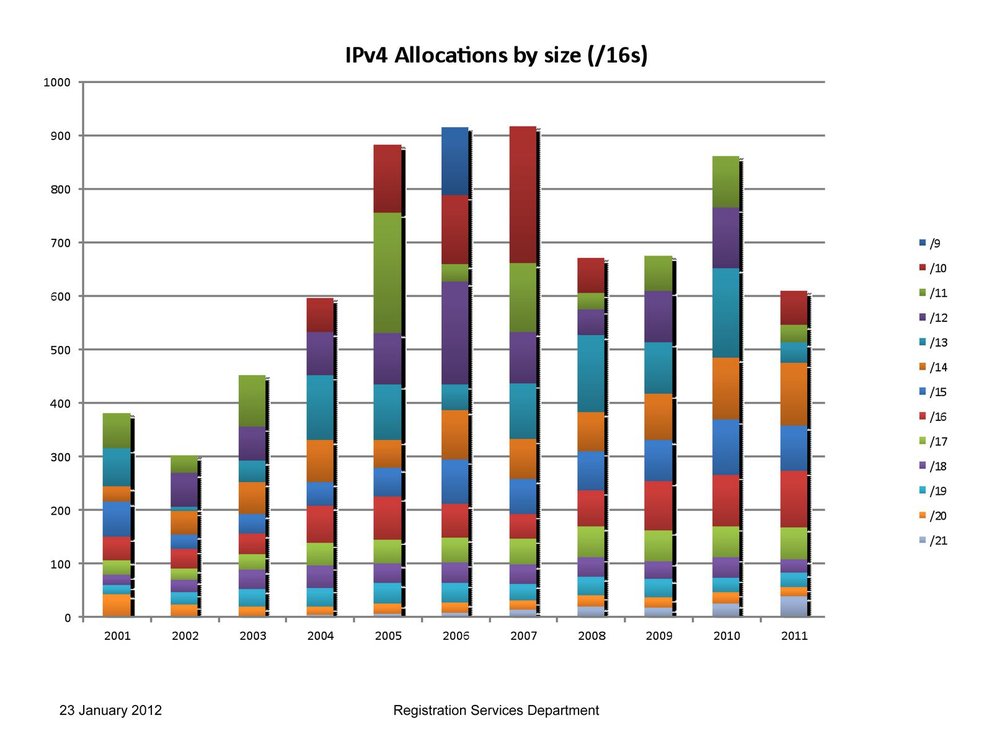2011 was an interesting year for IPv4. But did we see a big run on the remaining IPv4 address space? See some statistics and analysis below.
Introduction
2011 was an interesting year for IPv4: in February 2011, the Internet Assigned Numbers Authority (IANA) handed out their last free IPv4 address blocks to the Regional Internet Registries (RIRs).
In April 2011, the APNIC started allocating from their last /8 . It was expected that the RIPE NCC would also start allocating from its last /8 later in 2011 or early 2012, but this has not happened yet. All RIRs received one /8 that they will start allocating from when all other free IPv4 address space has been handed out. Different allocation policies may apply for allocating from these last /8s. More details on these policies in the RIPE NCC service region can be found in the RIPE Document ripe-509, section 5.6 .
We did not see a high increase in IPv4 address allocations in 2011. In fact the total number of addresses given out, decreased slightly while the number of allocations increased. See below some statistics to illustrate that.
2011 IP Address Statistics
While the total number of allocations has grown in 2011, the average size of the allocations has decreased compared to previous years. This indicates that more organisations had a chance to receive IPv4 address. This could have been an effect of the Run Out Fairly Policy .
Figure 3 shows the total amount of IPv4 address space allocated each year (aggregated as /16s on the y axis). You can see that in 2011 there was a decrease in the amount of IPv4 address space allocated.

Figure 3: Total amount of IPv4 address allocated
Figure 4 shows the number of allocations made by year, this time sorted by the size of the allocations. In 2011 the total number of allocations has increased, but in this image you can clearly see that especially the number of allocated /21s has increases significantly. More than half of the allocations handed out in 2011 were /21s. This can be partially attributed to the fact that the number of new members increased in 2011.

Figure 4: Number of IPv4 allocations by prefix size





Comments 1
The comments section is closed for articles published more than a year ago. If you'd like to inform us of any issues, please contact us.
Gert Doering •
I think we see "run out fairly" do its job - the allocations get smaller, and more widely distributed among members. And the process of requesting IPv4 addresses starts getting more painful, so people look for alternatives...